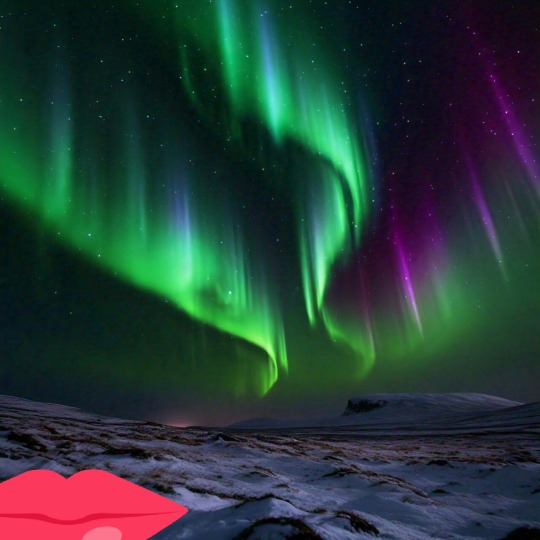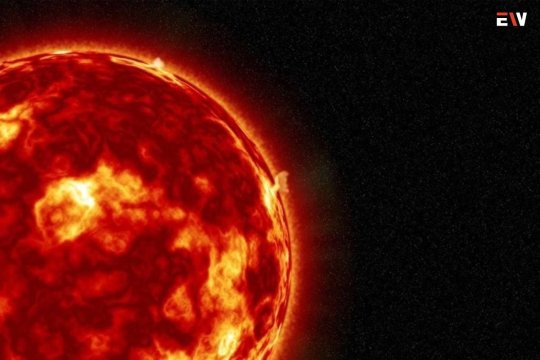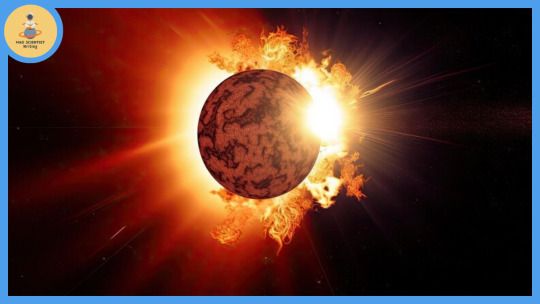#SolarActivity
Explore tagged Tumblr posts
Text
Northern Lights Dazzle UK Skies for Second Consecutive Night: A Rare Treat for Stargazers

[Image: A stunning photo of the Northern Lights in the UK, with vibrant green and purple hues dancing across the night sky]
In a rare and breathtaking display, the Northern Lights (Aurora Borealis) illuminated the UK skies for the second consecutive night, leaving stargazers and photographers in awe. This spectacular phenomenon is a treat for the eyes, and its repetition on successive nights has sparked widespread excitement among astronomy enthusiasts and nature lovers.
What are the Northern Lights?
The Northern Lights are a natural light display that occurs when charged particles from the sun interact with the Earth's magnetic field and atmosphere. The resulting spectacle can be mesmerizing, with vibrant colors and patterns dancing across the night sky.
Why are they rare in the UK?
The Northern Lights are typically associated with the Arctic regions, where the aurora is more frequent and intense. However, the UK is located at a lower latitude, making it less likely to witness this phenomenon. When the conditions are right, and the solar activity is high, the Northern Lights can be visible in the UK, but it's a rare occurrence.
What made this display special?
The recent display of Northern Lights in the UK was exceptional due to its intensity and duration. The lights were visible for several hours, allowing stargazers to marvel at the spectacle. Additionally, the display was seen in multiple parts of the country, making it a rare and shared experience for many.
Tips for spotting the Northern Lights
If you're eager to witness this natural wonder, here are some tips to increase your chances:
Head to a location with minimal light pollution
Dress warmly and be prepared for a long night
Bring a camera to capture the moment
Check aurora forecasts and solar activity
Be patient and enjoy the experience
Conclusion The Northern Lights are a breathtaking reminder of the beauty and wonder of the natural world. The recent display in the UK was a rare treat for stargazers and a reminder to appreciate the magic of the night sky. Keep looking up, and who knows, you might just catch another glimpse of this celestial spectacle!
#NorthernLights#AuroraBorealis#UKSkies#Stargazers#Nature#Astronomy#SolarActivity#LightPollution#NightSky#Photography
2 notes
·
View notes
Text
#Starlink#ElonMusk#SolarStorm#SpaceWeather#SatelliteInternet#SpaceX#SunVsTech#FallingSatellites#QuantumSky#HighOrbitHeat#TechInSpace#SolarActivity#2025SpaceNews#LEOorbit#InternetFromSpace#CosmicStorms#SpaceInnovation#SunPower#NewSpaceRace#SkyDisruption
0 notes
Text
Has The Internet Become Our Achilles Heel?
Back Story, Episode 8 with Steve Rother
In this episode, Steve shares recent evidence that some of the group's earlier predictions are now manifesting.
From the AT&T hack affecting 73 million people to the recent attack that destroyed 600,000 routers in the United States, he provides insights into what the group is saying about these events and what to watch for.
He discusses the rapid advance of AI in the underworld, leading to increased security measures and the need for two-party verification in everything. Additionally, Steve talks about Russia and other countries attempting to influence the U.S. election through social media and misinformation campaigns.
Steve also shares the group's perspective on living in the age of misinformation and what to observe regarding solar activity. Coronal Mass Ejections are frequently impacting our planet, and the group believes this is happening "just in time."
Lastly, Steve touches on the state of the Earth this year.
AVAILABLE NOW! (Link in Bio)
OR Listen/Watch @ ESPAVOtv® on Spotify, Apple, YouTube, Amazon, iHeart Radio & many other podcast outlets!
0 notes
Text
New Year’s Solar Spectacle: Massive Solar Flare Signals Caution Amidst Sky’s Radiant Show

A colossal solar eruption, marking the most substantial Solar flare in recent years, illuminated the skies on New Year’s Eve, signaling a cautionary alert for certain high-frequency radio users.
The NOAA’s Space Weather Prediction Center (SWPC) unveiled an image of this solar phenomenon on Sunday evening, depicting a luminous expanse on the sun, characteristic of a solar flare.
Described by the SWPC as a surge of energy from the sun that typically lasts from minutes to hours, this particular event, classified as an X5 flare, reached its peak a little before 5 p.m. ET on Sunday.
Energy Release Escalation
NASA categorizes solar flares analogous to earthquake scales, ranging from B-class to C-class, M-class, and finally, X-class. Each letter increment signifies a tenfold escalation in energy release, with the exception of X-class flares, which can surpass the value of 9. The most potent flare on record, an X45, occurred in 2003.
While B- and C-class flares remain imperceptible on Earth, M-class flares might induce transient radio disturbances at the poles and minor radiation storms hazardous to astronauts. However, X-class flares like the recent X5 can yield more conspicuous effects, such as radiation storms impacting satellites and imparting minor radiation doses to air travelers near polar regions. Moreover, they could potentially trigger global transmission disruptions and widespread blackouts.
Despite being smaller than the 2003 flare, Sunday’s X5 was the most potent since the X8.2 recorded in September 2017, surpassing the X2.8 event from December 14 in the same solar region.
Impact on Earth
The SWPC cautioned high-frequency radio users about possible signal degradation or loss due to the solar flare’s impact on the sunlit side of Earth. However, for the general populace, concerns were allayed, with the chance of witnessing auroras resulting from a detected coronal mass ejection (CME) being relatively slim.
SWPC’s forecast indicated limited states, predominantly in Alaska and Canada, having a high probability of experiencing the northern lights, while a handful of states like Washington, Idaho, and Maine held faint chances.
While a minor geomagnetic storm watch was issued for Tuesday, the likelihood of aurora sightings seemed even lower based on SWPC’s projections.
Anticipated to become more frequent in 2024, solar activities and CMEs are attributed to the sun’s progression through Solar Cycle 25, 11-year intervals characterized by magnetic pole reversals inducing space weather phenomena.
Despite potential impacts on navigation, communication, and radio signals, Dr. Delores Knipp from the University of Colorado Boulder reassured the public about existing safeguards in electrical grids and communication systems to mitigate adverse effects from solar storms. She stressed that such events, like Sunday’s solar flare, are routine and not cause for undue concern.
NASA’s Clarification
NASA clarified that catastrophic scenarios of a ‘killer solar flare‘ annihilating Earth are implausible. Additionally, with solar cycles recurring every 11 years, most individuals have already experienced a solar maximum without noticing.
A silver lining to this solar cycle is the forthcoming total solar eclipse on April 8, 2024, set to coincide near the cycle’s peak, promising an enthralling spectacle for sky gazers, as outlined by NOAA.
Curious to learn more? Explore our articles on Enterprise Wired
#SolarFlare#SpaceWeather#CelestialSpectacle#NewYearEve#NASA#Astronomy#SolarActivity#SpaceExploration
0 notes
Text
India's Historic Solar Mission: Aditya-L1
India has taken a giant leap in the field of space exploration with the successful launch of its groundbreaking solar observation mission, Aditya-L1. This momentous achievement comes just days after India created history by becoming the first country to land a spacecraft near the Moon’s elusive south pole. Let’s delve into the details of this remarkable endeavor and its significance for both…

View On WordPress
#AdityaL1#CelestialDiscovery#GlobalImpact#IndianAchievement#IndiaSpace#LagrangePoint#SatelliteProtection#ScienceResearch#SolarActivity#SolarMission#SolarStudy#SolarSystem#SpaceExploration#SpaceWeather#SunObservation
0 notes
Text
posting the idiots


#hmmmm they need a ship name#solaractive?#ricota?#nyochet?#who are we kidding#its solaractive#solaractive!!!#OR LUNACTIVE#OH NO I CANT PICK
8 notes
·
View notes
Text
"Solar Shenanigans: When the Sun Throws a Fiery Fit!"
Today we are going to dive deep into the fiery world of solar activity. If you’ve been following the news lately, you might have noticed that our Sun has been quite active, reminiscent of the infamous Carrington Event of 1859. The Carrington Event: A Historical Solar Storm First, let’s take a trip back in time to the Carrington Event. On September 1, 1859, British astronomer Richard Carrington…

View On WordPress
#SolarActivity CarringtonEvent SolarFlares SpaceWeather BinarSpaceProgram Satellites StayCurious#stargazing#Astronomy
0 notes
Video
youtube
7 INSANE Space Discoveries in 2024! | Groundbreaking Space Exploration I...
#youtube#SpaceDiscoveries2024 ExoplanetExploration GravitationalWaves SolarActivity NASA2024 ExtraterrestrialLife SpaceExploration DarkMatter CosmicD
0 notes
Text
youtube
In the most intense solar activity of 2025, the Sun released a powerful X2.7-class flare from sunspot AR4087 on May 14, following an X1.2 flare from AR4086. These flares caused widespread radio blackouts across multiple continents by overionizing the Earth's ionosphere. A coronal mass ejection (CME) linked to the X2.7 flare is headed toward Mars, potentially creating rare auroras on May 18. Although Earth avoided a direct hit this time, NOAA warns of continued solar activity and possible future impacts.
New Scientists Awards
Nomination Link: https://newscientists.net/award-nomination/?ecategory=Awards&rcategory=Awardee
Web Visitors: https://newscientists.net/
For Enquiry: [email protected]
#sciencefather #scientist #scienceinnovation #researchexcellence #scientificbreakthrough #NewScientistsAwards #SolarFlare #SpaceWeather #NASA #NOAA #SolarStorm #SolarActivity #Astronomy #SpaceScience #XClassFlare #X2Flare #CME #SunspotAR4087 #SolarCycle25 #MarsAurora #GeomagneticStorm #RadioBlackout
Get Connected Here:
=================
You Tube: https://www.youtube.com/@scienceawards-i6o
Twitter: https://x.com/awards67811
Instagram: https://www.instagram.com/afreen202564/
blogger: https://www.blogger.com/blog/posts/8014336030053733629?hl=en&tab=jj
Pinterest: https://in.pinterest.com/scienceawards/
0 notes
Video
Could A Plasma Storm Awaken the Dead? WHY Files Clips #PlasmaStorm #OccultVault #WHYFiles #AwakeningTheDead #ParanormalEnergy #GhostsAndScience #SolarFlares #CosmicMystery #ElectromagneticPhenomena #OccultKnowledge #SpiritualScience #DeadRising #MysteryChannel #HiddenTruths #SolarActivity #GhostAwakening #MagneticStorm #ParanormalTheories #SupernaturalScience #AncientSecrets #EMFEnergy
0 notes
Text
Top 60 most asked Java interview questions: crack like hack

Top 60 most asked Java interview questions It gives this guide easy navigation through every possible concept which could assist you either as a beginner entering into the tech world or an experienced developer wanting to progress and learn technical questions in java. Although, we have blogs related to becoming java developer full guide , how to become graphic designer in 2025 and Java full stack developer course free : A complete guide check it out.
Core Java Concepts: A refresher course on OOP principles, collections, and exceptions. Advanced Topics: Understanding multithreading, design patterns, Java 8 features including lambda expressions and streams with Java code interview questions. Practical Scenarios: Real-world examples that make you shine during the technical discussions. Interview-Ready: Java code interview questions Solaractical examples and explanations to build unfaltering confidence.
What we have for you ? core java interview question with answers
💡 You will now be brimming with strength, ready to tackle not just the routine questions but also the toughest questions if any arise, impress the hiring managers, and, of course, get through the offer!
👉 So begin your journey to becoming the Java professional everyone wants to have on board.
What is Java? Certainly, Java is a high-level, class-based object-oriented programming language, with minimal implementation dependency. It operates on the principle of “write once, run anywhere.” That is, compiled Java code can be run on all those platforms that support Java without recompilation.”
What are the unique features of Java? -Dynamic -High
Performance -Secure
Robust
Distributed
Multithreaded
Platform-independent
Object-oriented
3.Difference between JDK, JRE, and JVM. -JDK: Java Development Kit: It contains the Java Runtime Environment and an assortment of development tools used for Java application development. -JRE: Java Runtime Environment. This is a part of a computer and thus is not a tool given for Java. It provides the set of libraries and JVM needed to run Java applications. -JVM: Java Virtual Machine. An abstraction of a computer that allows a computer to execute Java programs by converting bytecode into machine-specific code.
4,What do you understand by ClassLoader in Java? ClassLoader in Java is a component of the Java Runtime Environment that is responsible for dynamically loading Java classes into the Java Virtual Machine. A ClassLoader finds and loads the class files at runtime.
5.Explain Object-Oriented Programming (OOP)
OOP is the programming paradigm based on the idea of “objects,” containing both data and code to manipulate that data. Four key important principles:
Encapsulation -Inheritance
Polymorphism
Abstraction
6.What is inheritance in Java?
Inheritance is the process of taking attributes and behaviors from one class to another, It is the mechanism through which a new class (subclass) inherits from an existing one (superclass). Inheritance supports code reusability and creates a relationship between classes, i.e., a superclass-subclass relationship. Top 60 most asked Java interview questions is one of important question
7.Polymorphism in Java?
More simply, polymorphic methods work differently depending on the object invoking them. Thus, polymorphism is of two types: name polymorphism and method overriding.
Compile-time polymorphism (Method Overloading)
Runtime polymorphism (Method Overriding)
8. What is encapsulation in Java?
Certainly, Encapsulation wraps the data (variables) and the code (methods) together as a single unit. Also, Developers achieve this by making the variables private and providing public getter and setter methods. But restricts direct access to some of the object’s components, which can prevent an accident song of data.
9. What is abstraction in Java?
Abstraction refers to the preventing the viewing of the complex implementation details while showing only the essential features of an object. It can be implemented. through abstract classes and interfaces.
10. What is the difference between an abstract class and an interface?
An abstract class is the one with both abstract and concrete methods and can maintain state via instance variables. A class can inherit an abstract class. An interface only has abstract methods (until Java 8, which introduced default and static methods) and cannot maintain state. A class can implement multiple interfaces.
11. What is a constructor in Java?
A constructor is a special method. which is called when an object is created. It has the same name as the class and no return type. It can also be overloaded, meaning that one class can have multiple constructors that can accept different numbers of parameters.
12. What is the difference between method overloading Certainly, Method overloading introduces the same names to multiple methods in the same class. But Method overriding means that a subclass provides a specific implementation. for a method that was already defined in the superclass.
13. What is the ‘this’ keyword in Java?
Although, The ‘this’ keyword refers to the current instance of class. Also It is used to indicate access to class variables and methods, and it helps in distinguishing the class attributes and parameters with identical names. and Top 60 most asked Java interview questions is one of important question
14. What is the ‘super’ keyword in Java?
The ‘super’ keyword refers to the immediate parent class object and can be used to access superclass methods and constructors.
15. A different comparison is the ‘== operator’ and the ‘equals()’ method in Java.
‘== operator’: Reference Comparison. It checks whether both references point to the same object or not.
‘equals()’ method: Compares for equality of the actual contents of the objects.
16. What is a static variable and a static method?
Static Variable: The variable that is shared across all instances of a class. It relates more to the class than to any instance of it.
Static Method: Refers to methods that belong to a class rather than the instance of an object. They do not require an instance of a class to be called.
17. What are Java Collections? Framework is a name given to the entire collection of classes and interfaces forming commonly reusable collection data structures such as lists, sets, queues, and Maps.
18. What is the difference between an ArrayList and a LinkedList in Java?
ArrayList: Certainly, Use dynamic arrays to store elements; it will provide fast random access but will be slow on insertions and deletions, especially in the middle.
LinkedList: Use doubly linked lists to store elements. It provides for faster insertions and deletions, but slower random access.
19. What is a Map in Java? Although, A map is an object that maps keys to values. It does not permit duplicate keys, and each key can map to at most one value worldwide.
20.What is the difference between HashMap and TreeMap in Java?
HashMap: Implements the Map interface using
21.What is the difference between HashSet and TreeSet?
HashSet: Uses a hash table for storage; does not maintain any order of elements.
TreeSet: Implements the NavigableSet interface and uses a red-black tree to maintain elements in sorted order.
22. Explain the differences between List and Set in Java.
List: It allows duplicate elements and maintains insertion order. Set: Does not allow duplicate elements and does not guarantee any particular order.
23. Explain the differences between an array and an ArrayList.
Array: Fixed-size, which can store both primitives and objects. ArrayList: Resizable, storing only objects.
24. What does the final keyword do in Java?
Final Variable: Cannot change its value. Final Method: This Cannot be overridden. Final Class: Cannot be subclassed.
25. What is the difference between String, StringBuilder, and StringBuffer?
String: Immutable, thread-safe. StringBuilder: Mutable, not synchronized, faster than StringBuffer. StringBuffer: Mutable, thread-safe.
26. What is the purpose of the transient keyword in Java?
The transient keyword is used to indicate that a field should not be serialized.
27. What is a volatile keyword in Java?
It ensures all the changes to a variable are visible to all threads. Top 60 most asked Java interview questions is one of important question.
28. What are the differences between synchronized and lock in Java?
Synchronized: Implicit locking mechanism. Lock: Offers more control and flexibility in locking.
29. What is multithreading in Java? Multithreading allows concurrent execution of two or more threads for maximum utilization of CPU.
30. What are the states of a thread in Java?
New
Runnable
Blocked
Waiting
Timed Waiting
Terminated
31. What is the difference between wait(), notify(), and notifyAll()?
wait(): Pauses the thread and releases the lock.
notify(): Wakes up a single thread waiting on the object’s monitor.
notifyAll(): Wakes up all threads waiting on the object’s monitor.
32. What is garbage collection in Java? Garbage collection is the process of automatically reclaiming memory by removing unused objects.
33. What are the types of memory areas allocated by JVM?
Heap
Stack
Method Area
Program Counter Register
Native Method Stack
34. What are the differences between throw and throws?
throw: Used to explicitly throw an exception.
throws: Declares exceptions in the method signature.
35. What is the difference between checked and unchecked exceptions?
Checked Exceptions: Must be handled or declared in the method signature.
Unchecked Exceptions: Runtime exceptions that do not need to be explicitly handled.
36. What is an enum in Java?
Enums are special data types that define the list of constants.
37. What is reflection in Java?
Reflection is the ability to dynamically inspect and modify a class’s behavior during runtime.
38. What is the difference between shallow cloning and deep cloning?
Certainly, Shallow cloning, like cloning, copies the values of all fields without taking into account the objects referred to. But , Deep cloning is like for all fields, a brand new class instance is created at those places. Top 60 most asked Java interview questions is one of important question
39. What are the types of design patterns in Java?
Creational (e.g., Singleton, Factory) Structural (e.g., Adapter, Proxy) Behavioral (e.g., Observer, Strategy)
40. What is the Singleton design pattern?
A design pattern that restricts the instantiation of a class to just one object and provides a global point of access to it.
To know more click here
0 notes
Text
The Suns Secret | Next Solar Cycle Detected Early
https://www.youtube.com/watch?v=-WJPSHBs2vY The Sun's current solar cycle, Cycle 25, is at its peak, but scientists have already detected the first signs of the next cycle, Cycle 26, using sound waves deep within the Sun. In this video, we explore how researchers from the University of Birmingham identified these early rumblings and what this means for our understanding of solar activity. Discover how this breakthrough could impact our predictions of sunspots, solar flares, and coronal mass ejections, which have direct effects on Earth. Source: Royal Astronomical Society. #astronomy #RoyalAstronomicalsociety #solarflare #sun #solarcycle #trendstorm #sunspots #astronomynews #solaractivity #sunscience #spaceweather #Helioseismology #solarresearch #spaceexploration #Sunspots2024 #solarphysics #SolarCycle25 #SolarCycle26 #astronomyfacts #solarobservation #sunresearch #spacescience #solarphenomena #magneticfield #spacenews #solarevent #cosmicevents #solardynamics #solarsystem #solarobservation #spaceresearch #solarobservation #solartechnology #spacephysics #solarenergy #astronomyresearch #solarmax #spacediscovery Next Solar Cycle detected early Solar Cycle 26 first signs Early detection of solar cycle 26 Solar Cycle 25 and 26 comparison Upcoming solar cycles predictions Solar maximum of Cycle 25 Sun's internal sound waves in solar cycles Sunspots increase during solar maximum Solar torsional oscillation explained Detecting solar cycles through sound waves Solar activity cycle research How solar cycles affect Earth Solar Cycle 25 magnetic field changes Solar Cycle 26 predictions Understanding solar cycles in astronomy First signs of solar cycle 26 Solar torsional oscillation pattern Solar activity and its impact on Earth Solar Cycle 26 early detection Astronomical discoveries about solar cycles Solar cycles and sunspot activity How sun's sound waves predict solar cycles Solar maximum phenomena explained Solar Cycle 26 rumblings detected Sun's magnetic field and solar cycles How scientists detect new solar cycles Solar Cycle 25 halfway mark Upcoming solar activity predictions Solar cycle detection methods Sun's torsional oscillation patterns Solar cycles and aurorae visibility Solar flares during solar maximum Solar activity cycle research 2024 Solar Cycle 26 early signs Solar energy surge during solar maximum Solar Cycle 25 research updates New discoveries in solar cycles Solar Cycle 26 detected in sound waves Understanding the sun's magnetic field Solar Cycle 25 sunspot increase Solar Cycle 26 starting signs Solar Cycle 25 impact on Earth Predicting solar cycles with sound waves Solar maximum sunspot activity Solar Cycle 26 early detection research The sun's next solar cycle Astronomical research on solar cycles Solar torsional oscillation and cycles Solar Cycle 25 vs. 26 differences Early predictions for Solar Cycle 26 Solar activity cycles in astronomy Solar Cycle 25 peak activity Understanding sun's torsional oscillation Solar Cycle 26 discovery Solar Cycle 25 ongoing research Solar activity impact on Earth Solar Cycle 26 sunspot predictions Solar Cycle 25 peak phase Solar magnetic field and cycles Solar Cycle 26 early observations Sun's internal sound waves research Solar Cycle 25 to 26 transition Solar maximum and solar cycles Solar Cycle 26 future predictions Solar cycles and Earth's weather Solar Cycle 25 data analysis How solar cycles are detected Solar torsional oscillation in solar cycles Solar Cycle 26 early indicators Understanding solar maximum via Trend Storm https://www.youtube.com/channel/UCF1F2JAMftAe2z2hl32FXmQ August 22, 2024 at 05:30PM
0 notes
Text
youtube
Watch the latest episodes of #SupplementalBroadcast to get the absolute most from following the #youtuberecommendedchronicles🔮 🎱 & myself cannot wait to have you join us in our alternative media adventure! #TheGreatAwakening #TheGreatResist #Censorship #Truth #Politics #CurrentEvents #Spirituality #Aliens #SolarActivity
0 notes
Photo

Today’s shaggy dog story on our neighborhood star.
21 notes
·
View notes
Text
'The Mega-Bubble That Saved the Earth'?

Hey, did you hear about the mega-bubble that collapsed on the Sun last year? It was so huge that it triggered an explosion that was supposed to hit Earth and cause a massive geomagnetic storm. But then something weird happened. The explosion missed us by a hair and passed mostly south of our planet. We only got a glancing blow that caused some minor auroras on higher latitudes. How lucky is that?😅
Apparently, this event was captured by a satellite called GOES-16, which has an extreme ultraviolet telescope that can see the Sun’s atmosphere. The bubble was actually a giant loop of plasma and magnetic fields that rose from the Sun’s surface and then snapped back, releasing a lot of energy. This is called a coronal mass ejection (CME) and it can travel through space at millions of kilometers per hour. If it hits Earth head-on, it can disrupt our power grids, satellites, and communications. Not to mention the beautiful but potentially dangerous auroras that can appear in the sky.
But why did the CME miss us? Well, it turns out that the direction and orientation of the CME’s magnetic fields are very important. They have to match with Earth’s magnetic field in order to cause a strong interaction. In this case, they didn’t match, so the CME just slid past us without much effect. It’s like trying to connect two magnets with the wrong poles facing each other. They just repel each other.
So we dodged a bullet there, but who knows when the next big CME will come our way? The Sun is very active right now as it reaches the peak of its 11-year cycle. That means more sunspots, flares, and CMEs are likely to happen in the near future. We better hope that our planet’s magnetic shield holds up and protects us from these solar storms. Otherwise, we might be in for some serious trouble.😱
What do you think about this? Are you fascinated by the Sun’s activity or scared by its power? Let me know in the comments below! And don’t forget to follow me for more updates on space weather and other cool stuff!👍
0 notes
Photo

👑 👽 🧬 #SourceLove #newearth #activation #empowerment #awakening #5dascension #fifthdimension #lightworkersunite #healing #energyupdate #theshift #solaractivity #starseed #lightworker #shadowwork #energy #schumannresonance #sourcefrequency #spirit #angel #angelmessages #higherconsciousness #higherfrequency #higherself #lightcodes #energyshift #lemuria #healer https://www.instagram.com/p/Ca1DpTTLygy/?utm_medium=tumblr
#sourcelove#newearth#activation#empowerment#awakening#5dascension#fifthdimension#lightworkersunite#healing#energyupdate#theshift#solaractivity#starseed#lightworker#shadowwork#energy#schumannresonance#sourcefrequency#spirit#angel#angelmessages#higherconsciousness#higherfrequency#higherself#lightcodes#energyshift#lemuria#healer
0 notes